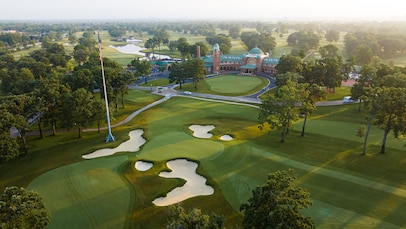best new
Hundreds of experts reviewed the best new courses of the year. These were the best of the best

In 2024, hundreds of Golf Digest course-ranking panelists visited 59 new or remodeled courses that were candidates for our annual awards. The Best New Public and Private awards are given to the year’s most outstanding original courses, including those built over the bones of an older course. Traditional renovations and restorations, consisting of alterations and projects that return the design to some historically based version of its past, are combined in Best Renovation. Best Renovation winners are determined by surveys that measure the effectiveness of the work before and after construction. (Panelists must have played the course previously.) Best Transformation assesses major remodels that go beyond mere renovation to include a newly conceived architectural intent, new holes and possibly newly routed sections of the property—the name remains the same, but if you blinked you might not recognize the course. Here’s the work that our panelists deemed most significant for 2024.
You will find the winners below—but beyond just a list, please explore our expanded stories on each of the winners and runners-up for the categories at links below.
Additional write-ups and photos on every candidate can be found on each of the additional pieces of content. Plus, explore each course review page and leave reviews on the courses you've played to have your ratings featured on our pages.
BEST NEW PRIVATE COURSE

BACKCOUNTRY STUNNER Chet Williams made great use of the land at Big Easy Ranch.
Brian Oar
WINNER
THE COVEY AT BIG EASY RANCH
Columbus, Texas
7,511 yards, par 72
Architect: Chet Williams
Brian Oar captured exclusive drone footage of The Covey for Golf Digest. You can find one of the drone shots below—find more at our separate story here.

With no surrounding development, The Covey is a scenic journey through the Texas outback through groves of pines and hardwoods and cross-course views. Numerous specimen trees have been left standing in the fairways that must be maneuvered around, and Williams’ green complexes can be wicked, flanked and fronted with deep, staggered bunkers, with strong putting contours that create multiple internal levels and severe false fronts that eject any short approached 30 or 40 yards back down the fairway.
SECOND PLACE
OLD BARNWELL
Aiken, S.C.
7,070 yards, par 73
Architects: Brian Schneider, Blake Conant
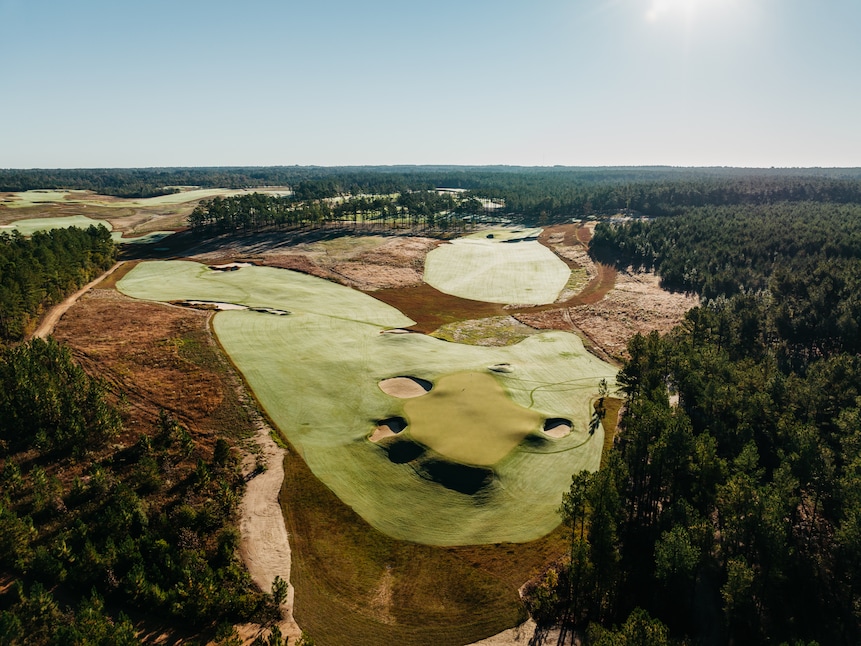
THIRD PLACE
THE TREE FARM
Aiken, S.C.
6,855 yards, par 71
Architects: Kye Goalby, Tom Doak, Zac Blair

At The Tree Farm, PGA Tour player and founder Zac Blair has attracted a kindred young-in-spirit if not exclusively young-in-age membership from across the country that mirrors his infectious relaxed-casual passion for walking, fast play, head-to-head matches and creative architecture, particularly from the approach shot through the green. A majority of them are good players who think nothing of hoofing 36 or more holes a day.
BEST NEW PUBLIC COURSE

HIGH NOTES Pinehurst #10 boasts extreme elevation, unlike the resort's other courses.
Jeff Marsh
WINNER
PINEHURST (N.C.) #10
7,020 yards, par 70
Architect: Tom Doak

Sand is the defining character of Pinehurst, and Pinehurst #10 goes right to the source: a former sand mining site south of the resort, portions of which used to be a golf course called The Pit that closed in 2010. Several holes of this Tom Doak design, opened in 2024, plunge through the old quarries, including the turbulent eighth where players will want to pop Dramamine before tackling fairway swells that would pitch and toss a fishing vessel.
SECOND PLACE
CABOT CITRUS FARMS (KAROO)
Brooksville, Fla.
7,562 yards, par 72
Architect: Kyle Franz
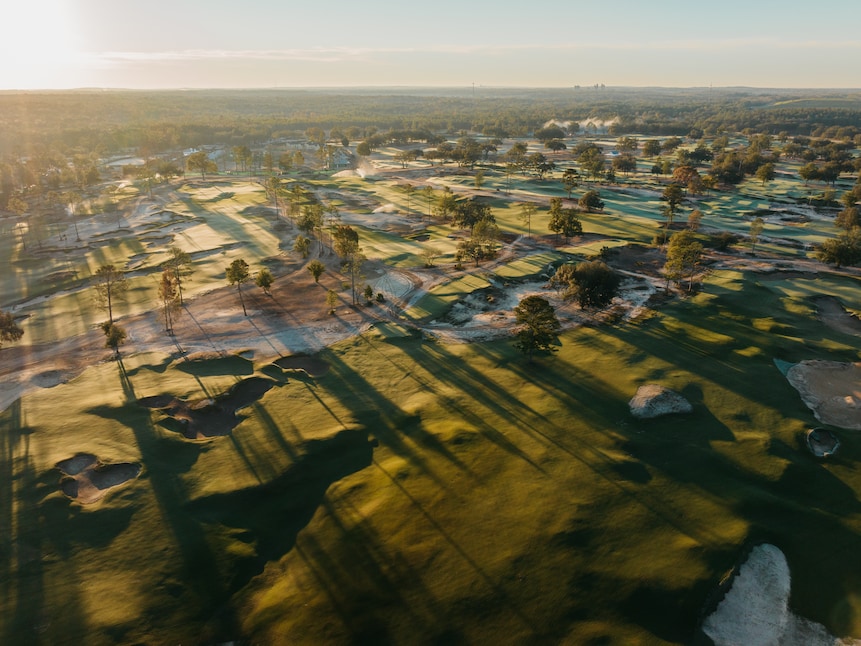
When arriving at Cabot Citrus Farms you’ll understand why Ben Cowan-Dewar sought this property for decades. The modern trend of pushing width and options is amplified with “super width” here, with some fairways over 100 yards wide, though strategy is still present—as large, exposed sand hazards often split the playing areas. Choosing the ideal side of the fairway will often open up an easier approach.
THIRD PLACE
SEDGE VALLEY AT SAND VALLEY
Nekoosa, Wis.
5,829 yards, par 68
Architect: Tom Doak

Sedge Valley is architect Tom Doak’s homage to the early 20th century, sub-par 70 courses popular in the London heathlands and throughout the U.K. Tipping the scales at less than 6,000 yards and par 68, it might seem like light fare but it isn’t—this is real golf that demands confident driving and smart approaches into a set of small, distinguished green complexes.
BEST RENOVATION

UNCOVERED GEMS Andrew Green used Donald Ross' blueprints to help guide his Interlachen renovation.
Brad Rempel
WINNER
INTERLACHEN COUNTRY CLUB
Edina, Minn.
7,201 yards, par 72
Architect: Andrew Green
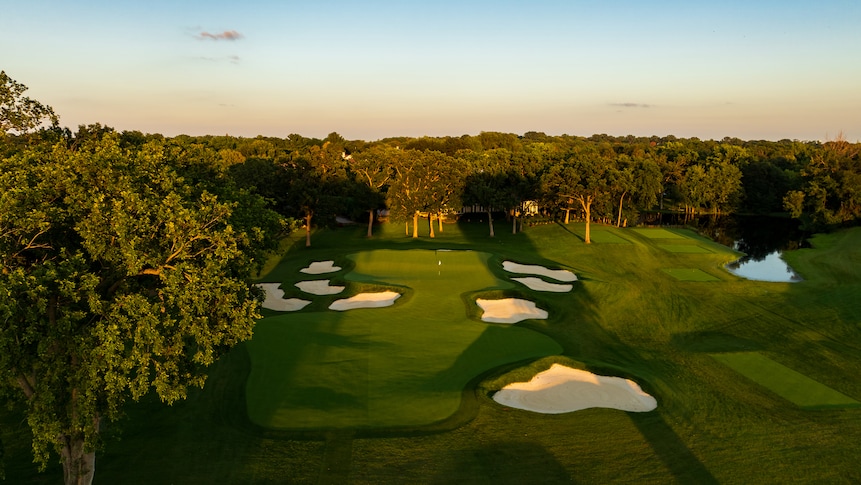
When Bobby Jones won the 1930 U.S. Open at Interlachen (completing the second leg of what would become the game’s first Grand Slam), fellow competitor Gene Sarazen insisted the course was tougher than everything but Oakmont. In the decades that followed a series of architects including Robert Trent Jones, Geoffrey Cornish and Brian Silva worked to keep Interlachen’s edge, but nothing could staunch the march of time. Enter Andrew Green in 2023, who was given the resources to strip back the layers and rebuild the course based on the blueprints Donald Ross developed in 1922 when he remodeled the course.
SECOND PLACE
OCEAN FOREST GOLF CLUB
Sea Island, Ga.
7,365 yards, par 72
Architect: Beau Welling

Ocean Forest occupies one of the premier oceanside settings on the East Coast. Originally designed by Rees Jones, the fairways laterally traverse the site’s interior pines, skirting marshes and breaking out in memorable moments to the shore of the broad Hampton River inlet before finishing along the Atlantic Ocean at 17 and 18.
THIRD PLACE
OMNI LA COSTA RESORT & SPA (NORTH)
Carlsbad, Calif.
7,500 yards, par 72
Architects: Gil Hanse, Jim Wagner

BEST TRANSFORMATION

GOLD VISION Medinah #3's prairie-style redesign makes best use of the land.
Medinah Country Club
WINNER
MEDINAH (ILL.) COUNTRY CLUB (#3)
7,564 yards, par 72
Architects: Geoff Ogilvy, Mike Cocking, Ashley Mead
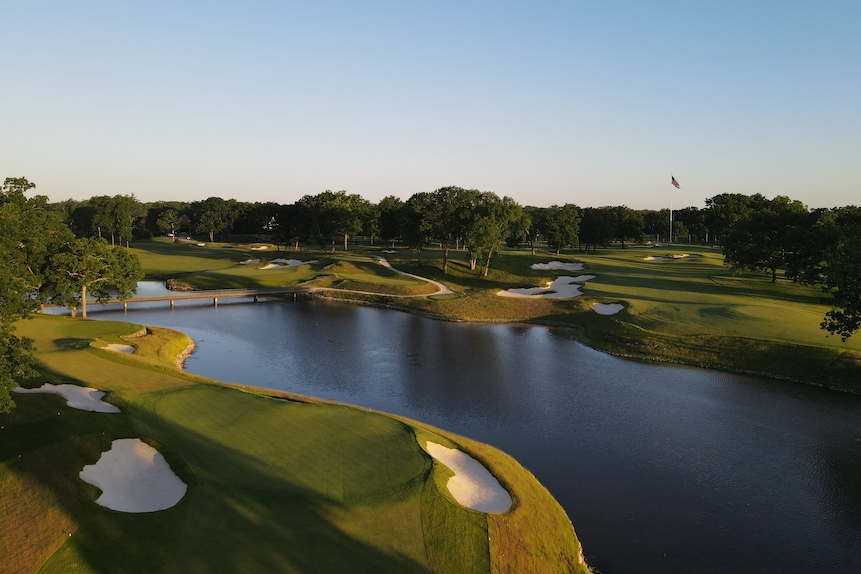
The evolution of golf course architecture—and how courses change to suit the demands of the times—can be mapped directly on top of Medinah’s #3 course. It was built in the fields west of Chicago in the 1920s on land that was part farmland and partly wooded. It became a major championship site when it hosted the 1949 U.S. Open, putting it on a track of perpetual improvements to toughen it up to keep pace with tournament demands. But when No. 3 was blistered to the tune of 25-under during the 2019 BMW Championship, which coincided with a plunge in the rankings from 53 to 93, the club knew it was time to adapt again. They took a swing and hired the Australian firm of Ogilvy, Cocking and Mead to overhaul the design with the notion of making the course look and play like it might have in the 1920s.
SECOND PLACE
EAST LAKE GOLF CLUB
Atlanta
7,490 yards, par 72
Architect: Andrew Green

East Lake underwent another major restoration following the 2023 Tour Championship, this time by Andrew Green, highlighting the course's Donald Ross heritage. Green used a 1949 aerial to inform the replacement of bunkers and the shape of greens, which are much larger and possess a wider variety of hole location and slopes than before. Almost every hole was dramatically revamped, creating a course that poses driving options and requires the careful calibration of each shot rather than a mere test of straight hitting.
THIRD PLACE
WOODMONT COUNTRY CLUB (SOUTH)
Rockville, Md.
7,002 yards, par 71
Architect: Joel Weiman

Since it first opened as a nine hole amenity in the early 1950s, Woodmont South (it was expanded to 18 a few years later) has been the club's shorter, sportier course compared to the more robust North, ranked fifth in Maryland. That all changed following a 2023 remodel by architect Joel Weiman, who transformed the course into a Melbourne Sand Belt/American prairie hybrid by recontouring every green and surrrounding them with expanses of tight turf, building Australian-style bunkers with sharp lips that cut toward the edges of putting surfaces and introducing native grass buffers throughout the course. He also found additional length, taking the championship tees to over 7,000 yards. No longer the "other" course, the South more than holds its own in distinctiveness not just against the North but against most other designs in the region.
BEST AFFORDABLE

Dustin Gilder
WINNER
WELLMAN CLUB
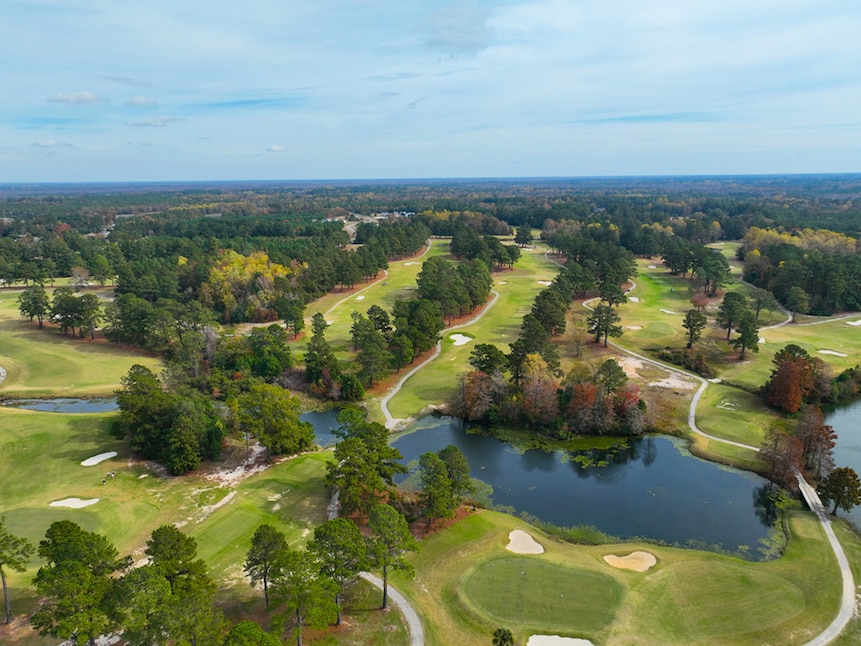
SECOND PLACE
BOBBY JONES GOLF CLUB
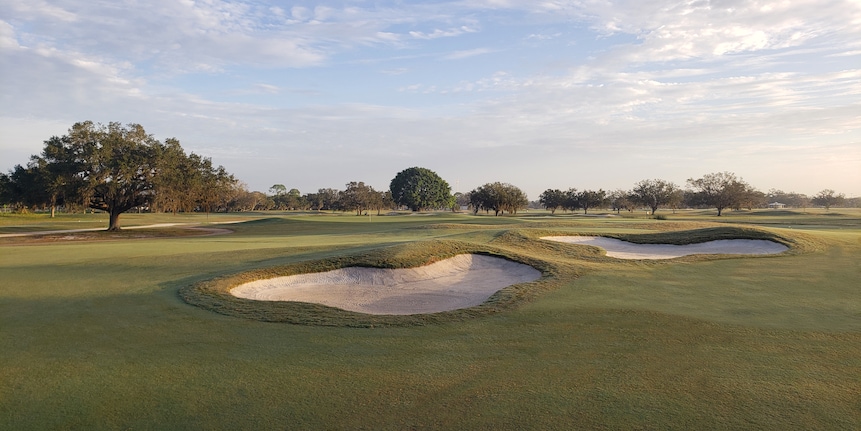
THIRD PLACE
THE LINKS AT AUDUBON
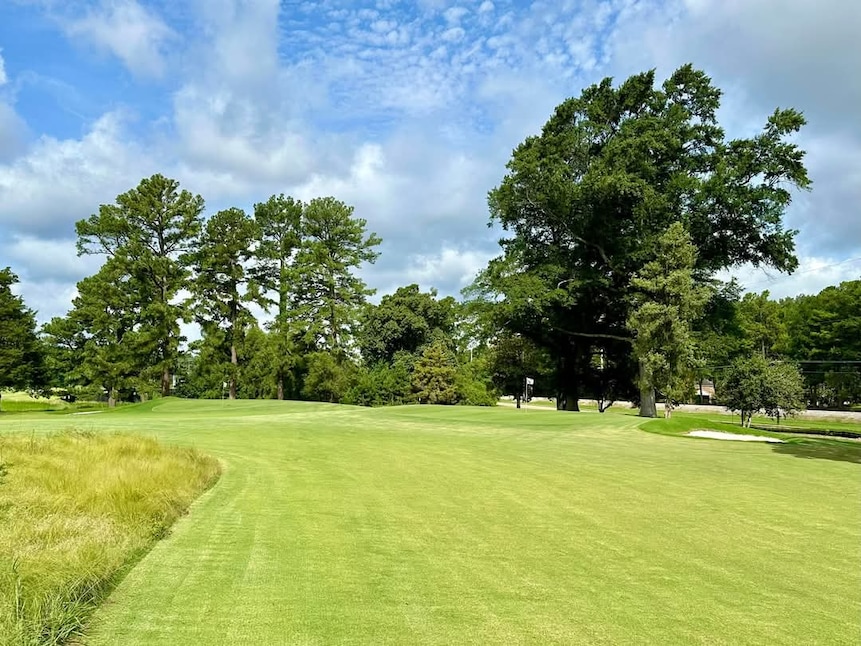
Come back on Friday for a full story on the reintroduction of our Best Affordable Public Course survey.
• • •
Explore our brand-new course reviews experience with individual course pages for bonus photography, drone footage and expanded reviews of top international courses and all 17,000-plus courses in the United States. Post your own ratings for courses you’ve played … and tell us where it should be ranked.






